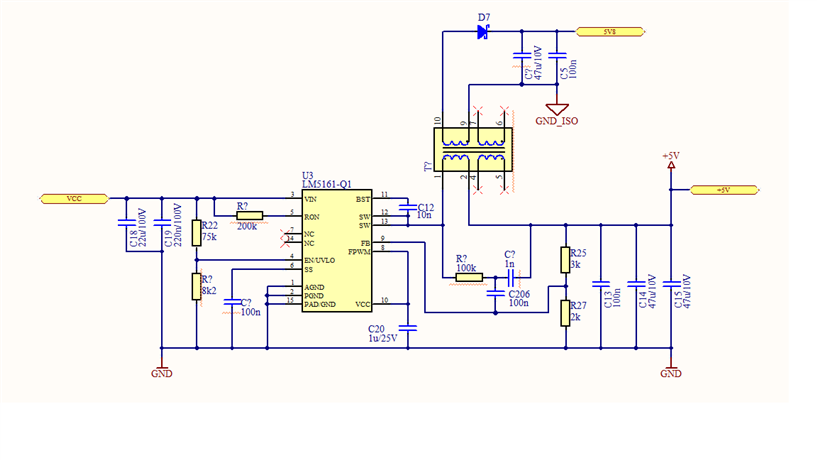Other Parts Discussed in Thread: LM5160DNTFBK-CALC
Hi TI,
I have an application which will use LM5161-Q1 in a fly-buck configuration. I'm testing a few custom transformers and have the design working but I'm not sure if the temperature rise of my transformer is "normal" for the given load.
Vin: 12-50
Vout1 (N1, non-iso): 5V
Vout2 (N2, non-iso): 12.7V
Vout3 (N3, iso): 6.6V
Vout4 (N4, iso): 12.7V
Freq: 210kHz
Transformer specifications:
L(pri): 60uH
Isat: 1.4A
I(N1): 1A
I(N2): 100mA
I(N3): 1A
I(N4): 100mA
DCR(N1): 125m
DCR(N2): 125m
N1:N2 = 1:1.34
Test procedure:
Vout1 loaded with 200mA
Vout3 loaded with 600mA
Vout2 and Vout4 were not used. The transformer temperature rise was about 35°C from an ambient temp of 24°C. This seems excessive to me. The application will run in high ambient temperatures so a 35°C rise with a little more than half the rated current on the isolated side is too much. The saturation current is on the low side but it is higher than the min. high side current limit of 1.3A. I have run the numbers in the LM5160DNTFBK-CALC and max. current+ripple do not exceed 1.3A.
I also tested one of our flyback designs with a much smaller transformer and loaded it with even more than the Fly-Buck and the temp. rise was minimal. What could be causing the transformer to heat? The copper losses for the given load shouldn't be that high, could the core losses be the main heating source? And if so, why?
Thanks,
Tilen



